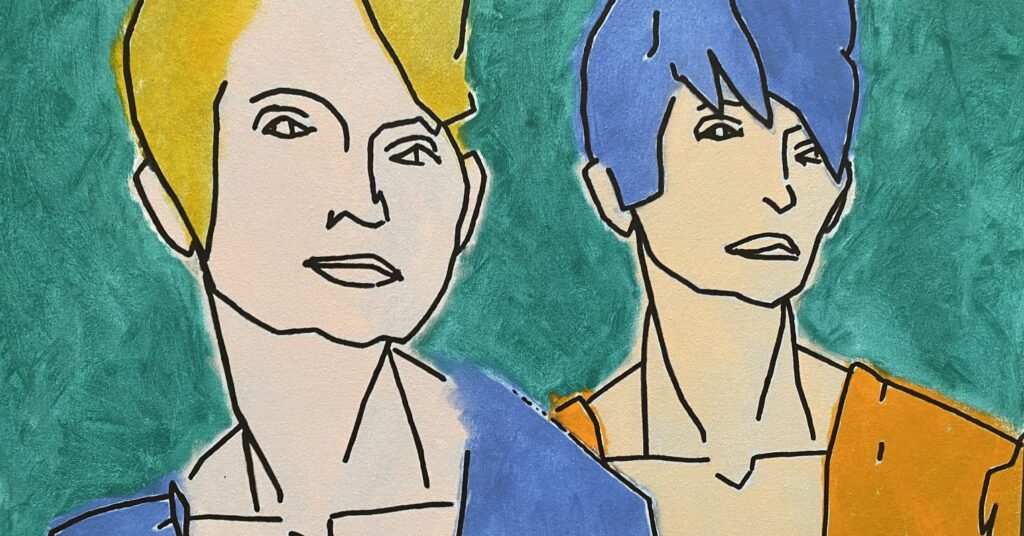Art created by artificial intelligence (AI) is currently featured in the 2024 Whitney Museum of American Art Biennial in New York City. The exhibit, “Better Than the Real Thing” (March 20 to August 11), showcases AI in its first display and later exhibits. The museum has exhibited more AI-generated works, but not as part of the biennial.
Any art featured in a biennial is, by definition, new and innovative. The committee's choice to highlight AI puts AI where it belongs—new, exciting, novel, and, for many, uncertain. This is because the rapid development in AI has fueled the debate over whether it can replace human creativity in the arts. Critics argue that the essence of human creativity is irreplaceable by machines, emphasizing the importance of human experience in artistic creation.
research
Entering the AI Exhibition at the Whitney Biannual 2024
Source: Shirley M. Mueller
Recently, this conundrum has been studied scientifically by Lucas Beliché and colleagues (July 2023). His paper is titled “Humans vs. AI: Whether and Why We Prefer Human Creation to AI-Generated Artwork.” Bellaiche and colleagues explored whether human-created art is preferred over AI-created art and the underlying reasons for such preferences.
The research included two studies in which participants reviewed artworks that they did not know had been created by AI. These artworks were randomly labeled as either “human-created” or “AI-created” to assess the effects of labels on participants' aesthetic judgment. Judging criteria included likeability, beauty, depth and value.
The results of the first study indicated that artworks labeled as human-created were consistently rated higher on all criteria than those labeled as AI-created, thus indicating a bias toward human-created art. . To further explore this bias, the second study expanded the evaluation criteria to include emotional response, story comprehension, perceived meaningfulness, effort, and estimated time taken to create the artwork.
The results of the second study confirmed the initial findings, with human-labeled artworks again receiving higher ratings. However, other research also revealed that the narrative associated with the artwork and the perceived effort behind it significantly influenced ratings. In particular, artworks that were thought to involve more human effort or told a compelling story were rated higher in likability and beauty. Additionally, participants' attitudes toward AI also influenced their judgments, with more positive attitudes toward AI resulting in higher ratings for AI-generated art, particularly regarding depth and value. .
These studies demonstrate a clear bias against AI-created artworks compared to those created by humans, especially for judgments beyond surface-level aesthetic appreciation. This bias is less pronounced in sensory-level judgments, such as likeability and beauty, where AI-created artworks can closely compete with human-made ones.
To put it differently, studies show that while AI can create aesthetically pleasing art on a sensory level, it struggles to replicate the deeply communicative aspects of art rich in human experience. . This distinction between sensory and communicative judgments is consistent with dual-process theories in aesthetics, which distinguish between immediate, sensory processing of artworks and more reflective, meaning-based evaluation.
In addition, the work of Bellaiche and colleagues highlights how different factors, such as narrative and perceived effort, can moderate the effects of creator labels on aesthetic judgments. For example, when a work of art is perceived as having a rich narrative or requiring significant effort, it is more likely to be appreciated, regardless of whether it is a human or AI creation. is made However, these effects are influenced by viewer attitudes toward AI, suggesting that as social attitudes evolve, so do perceptions of AI-generated art.
As such, AI can mimic certain aspects of human artistic creativity, particularly in producing visually appealing artwork. It is less successful in replicating the human-centered elements that contribute to the depth and value of art.
Future
The implications of this research are important for understanding the future of art in the age of AI. As AI technologies continue to develop and become more integrated into the creative industries, it will be important to consider how they are perceived and what roles they are best suited to play. While AI cannot replace human artists, it can potentially serve as a tool that complements human creativity, enhancing the artistic process rather than replacing it.
Result
This study contributes to the ongoing discussion on the relationship between AI and human creativity. It highlights the enduring value of human connection in art, which encompasses more than just the production of aesthetically pleasing objects, but also the communication of deeply human experiences and emotions.
